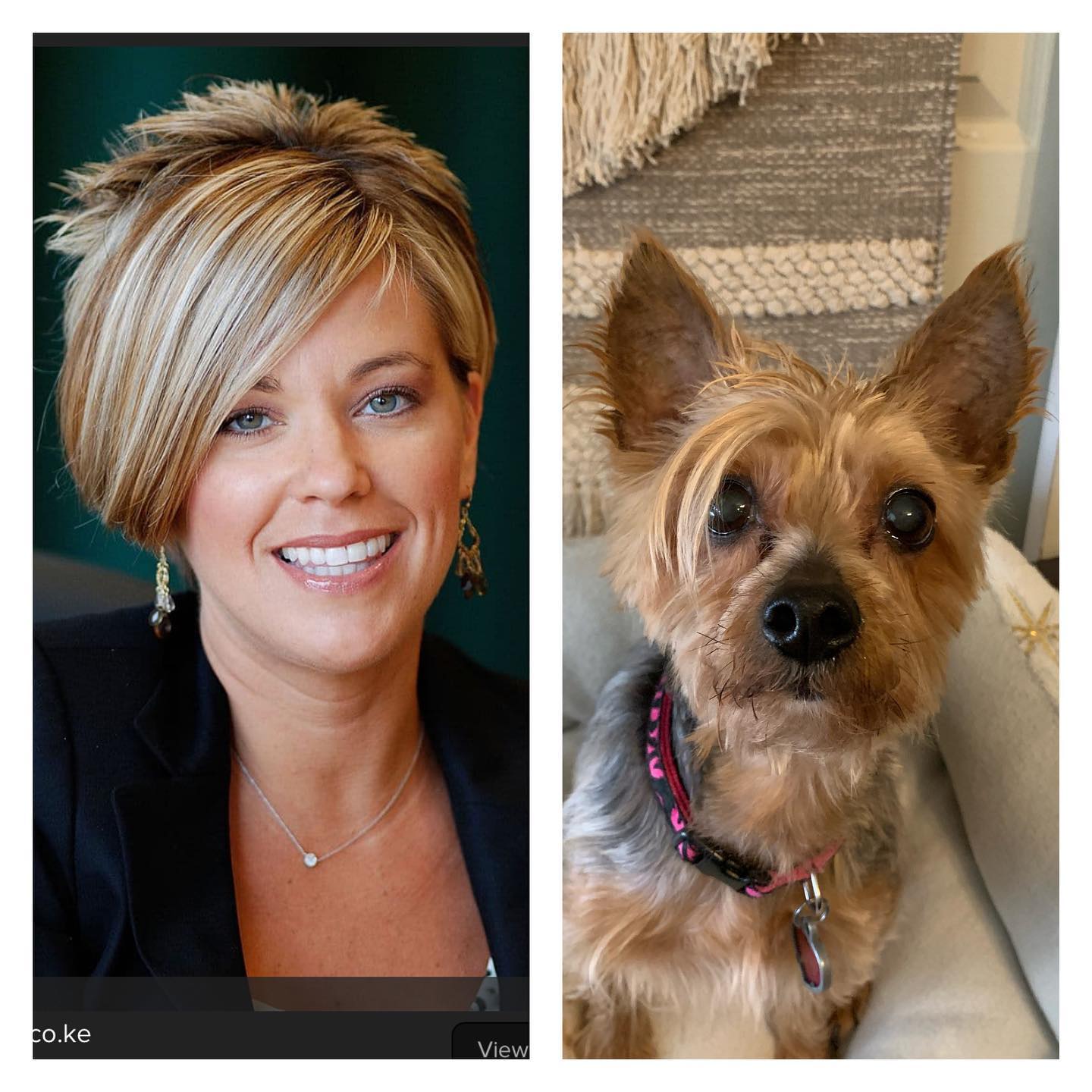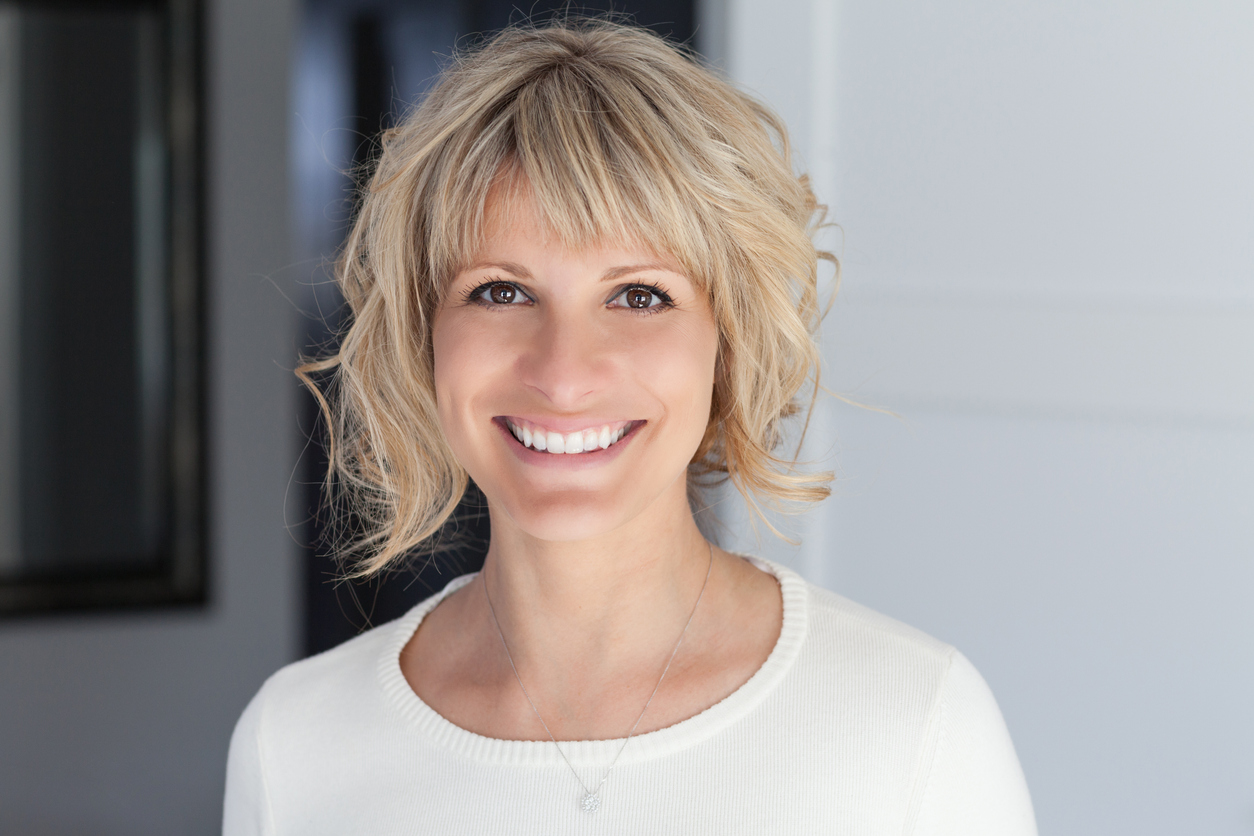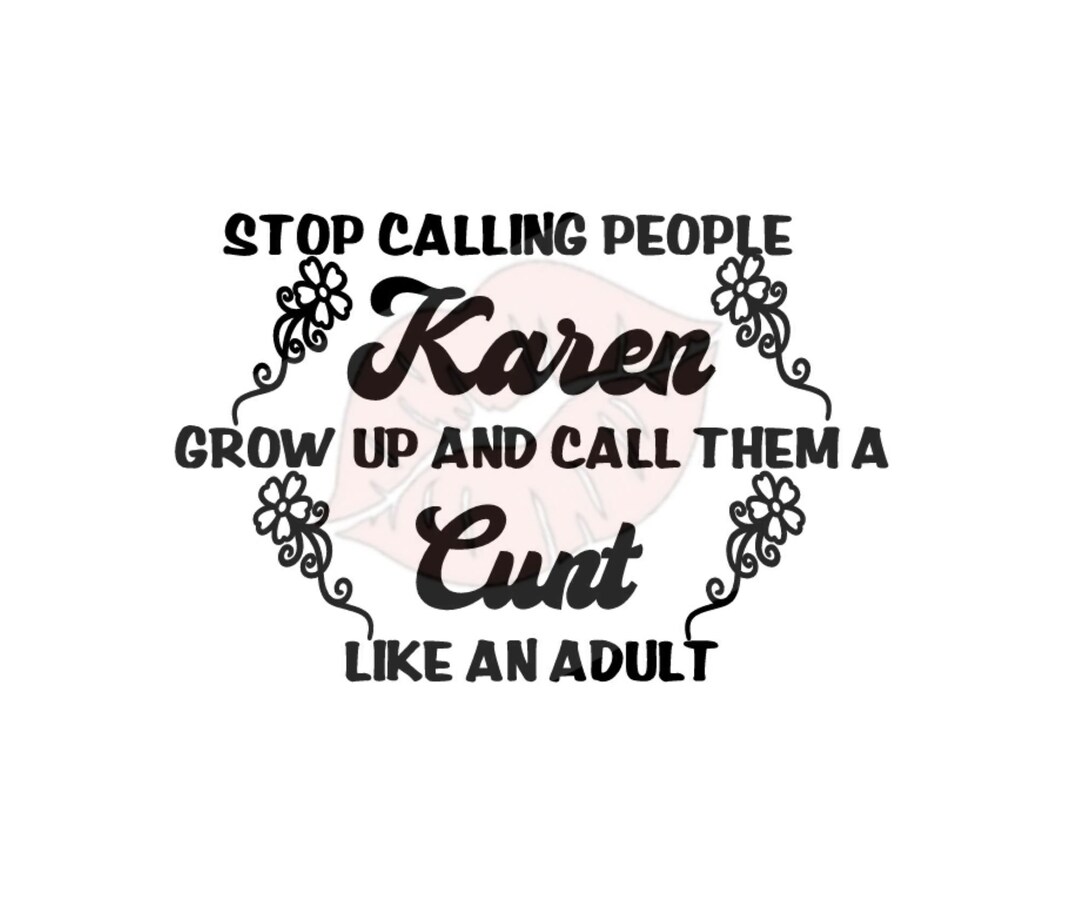Unpacking The Symbolism Behind The Karen Cut
Have you ever scrolled through social media and seen a picture of a particular haircut, perhaps a short, angular bob with prominent highlights, and immediately thought, "Oh, that's a 'Karen'?" It's a rather common experience these days, isn't it? This distinct style, often referred to as "the Karen cut," has become a visual shorthand for a specific kind of public behavior. It’s more than just hair; it's a cultural marker, a visual cue that, for many, points to a broader social archetype. We see it, and we almost instantly understand the implied meaning, a sort of shared cultural joke that has, in some respects, grown quite serious.
The term "Karen" itself has truly evolved from a simple given name into a widely recognized, if somewhat controversial, social phenomenon. It's a label that typically describes an angry, often older, and usually white American woman who is perceived as entitled or demanding beyond what is reasonable. This archetype frequently appears in viral videos where individuals confront service workers, demand to "speak to the manager," or exhibit a general lack of regard for others' boundaries or rules. So, the haircut, you see, became deeply intertwined with this character, a kind of uniform for the type of person people were encountering in these situations.
But where did this particular association begin, and what made it stick so firmly in our collective imagination? It's a rather fascinating journey, actually, from a generic name to a powerful meme, and then to a specific hairstyle. The connection between the name, the behavior, and "the Karen cut" is a complex web of cultural observation and shared experiences, which we will now try to untangle. It’s a bit like watching a new language develop, where visual cues become just as important as words themselves.
Table of Contents
- Understanding the "Karen" Archetype
- The Origins of the "Karen" Meme
- What Exactly is "The Karen Cut"?
- The Cultural Significance of the Haircut
- A Deeper Look: Through a Feminist and Psychological Lens
- FAQs About The Karen Cut and Meme
- Moving Forward with Understanding
Understanding the "Karen" Archetype
The term "Karen" has, quite simply, become a shorthand for a very specific type of individual. She is, in the popular imagination, an entitled, selfish, and often thoughtless white woman. This isn't just a random accusation; it's a characterization that has been built up through countless viral instances and shared anecdotes. People often describe her as someone who feels she deserves special treatment, or that rules simply do not apply to her. It's a pretty strong image, you know, and it resonates with many.
The archetype often involves public confrontations, particularly with those in service positions. You might see her demanding to "speak to the manager" over trivial matters, or perhaps she's refusing to follow public health guidelines, citing her personal freedom above collective well-being. This kind of behavior, really, highlights a perceived sense of privilege. It's almost as if she believes her comfort and preferences should always take precedence, which is a bit of a problem in a shared society.
In some respects, contemporary "Karens" have even been compared to historical figures who embody a certain kind of privileged white womanhood. For instance, some discussions draw parallels to Carolyn Bryant, a white woman whom Emmett Till was accused of offending, leading to his tragic lynching. In literature, she might be likened to Mayella Ewell, a fictional character from "To Kill a Mockingbird" who falsely accuses a Black man. These comparisons, you see, are meant to highlight a problematic history of white women's perceived fragility or victimhood being weaponized, often with severe consequences for others, particularly people of color. It's a rather heavy historical echo that the meme carries.
The Origins of the "Karen" Meme
If you've wondered about the meaning behind the "Karen" meme, it's actually quite fascinating to trace its beginnings. The name "Karen" is based on the female given name, naturally. Evidence for its use as a humorous generic name for a woman dates back to at least the early 2000s. People were already using "Karen" to mock middle-aged women, often implying a certain suburban sensibility or a lack of awareness. It wasn't always tied to the anger or entitlement we associate with it today, but the seed was planted, you know?
The meme truly exploded into widespread popularity on social media platforms, especially around the mid-2010s. It became a viral phenomenon, helped along by specific incidents that were captured on video and widely shared. One notable example that really cemented the "Karen" and "Ken" labels was when Patricia and Mark McCloskey were dubbed "Karen and Ken" after photos emerged of them pointing firearms at protestors. This incident, actually, provided a very clear visual example of the kind of entitled, confrontational behavior that the meme had come to represent. It was a rather stark illustration, to say the least.
The internet, with its rapid sharing and remixing culture, helped the meme stick. It offered a quick, understandable shorthand for a particular social dynamic. Anyone who spends more than ten minutes on social media will, in some way, run into her, or at least a reference to her. It’s become a universal language for calling out certain behaviors, a way for people to vent frustrations about perceived injustices or everyday annoyances. It's pretty powerful, how a simple name can become such a widely recognized symbol.
What Exactly is "The Karen Cut"?
So, let's talk about "the Karen cut" itself. While there isn't one single, universally agreed-upon "Karen cut," the term typically refers to a very specific type of hairstyle. It's usually a short, angular bob, often with layers that are shorter in the back and longer in the front. This style tends to have a lot of volume, especially at the crown, and often features prominent, sometimes chunky, highlights. Think of a look that might have been fashionable a few decades ago, and has perhaps not been updated since, yet is maintained with a certain rigidness. It’s a rather particular aesthetic, you know?
The haircut itself is, of course, just a hairstyle. Many people have similar cuts without embodying the "Karen" persona. However, the meme has strongly associated this particular style with the archetype. It’s almost like a visual stereotype, where the hair becomes a quick indicator, a sort of uniform. The perception is that this haircut often accompanies the personality traits associated with the "Karen" meme – the perceived entitlement, the demanding nature, the desire to control situations. It’s a bit of a chicken-and-egg scenario, in a way, but the visual link is undeniable.
The style became popular in the late 20th and early 21st centuries, and it was quite common among middle-aged women. So, when the "Karen" meme started to gain traction, often describing older, white women, this particular haircut was already prevalent among that demographic. It was, therefore, a natural visual fit for the meme, solidifying "the Karen cut" as a recognizable part of the overall "Karen" phenomenon. It's like the meme found its perfect visual counterpart, almost organically.
The Cultural Significance of the Haircut
The significance of "the Karen cut" goes beyond just a humorous observation about hairstyles. It has become a potent symbol in contemporary culture, representing more than just a bad hair day. It’s a visual shorthand that allows people to quickly identify and comment on certain behaviors they find problematic. When someone references "the Karen cut," they are usually not just talking about the hair; they are invoking the entire set of behaviors and attitudes that the "Karen" archetype represents. It’s a pretty powerful form of non-verbal communication, you see.
This haircut, in a way, helps to visually define the boundaries of acceptable public behavior, or rather, what is *unacceptable*. When people share videos or stories of "Karens" online, the haircut often serves as an immediate visual cue, making the archetype even more recognizable. It helps to reinforce the shared understanding of what a "Karen" looks like and how she might behave. This collective recognition is what makes the meme so effective, and the haircut such a strong part of it. It’s a bit like a cultural inside joke that everyone is in on.
Moreover, the meme, and by extension "the Karen cut," allows for a kind of collective catharsis. People who have experienced similar demanding or entitled behaviors in their daily lives find a common language and a way to express their frustration. It's a way to call out privilege and perceived injustice without having to explain every detail. The visual cue of "the Karen cut" simply makes that process quicker and more universally understood. It’s a rather clever way that internet culture processes social observations, actually.
A Deeper Look: Through a Feminist and Psychological Lens
Exploring the cultural archetype of "Karen" through a depth psychology and feminist lens reveals much more than just surface-level humor. It helps us understand how racism, patriarchy, and shadow projection intersect within this phenomenon. The "Karen" meme, with its associated haircut, is not simply about mocking a woman; it touches upon deeper societal issues and historical patterns of power and privilege. It's a rather layered concept, you know?
From a feminist perspective, the "Karen" meme, while often directed at women, can be seen as a critique of a specific manifestation of white female privilege. It highlights how some white women, perhaps unconsciously, use their social standing to exert control or demand deference, sometimes at the expense of others, particularly people of color or those in service roles. This behavior, arguably, is rooted in historical power structures where white women, even while oppressed by patriarchy, still held a higher social status than marginalized groups. It's a complex dynamic, you see, where privilege can manifest in unexpected ways.
The concept of "shadow projection" from depth psychology is also quite relevant here. People project their own unacknowledged negative traits or societal frustrations onto the "Karen" figure. The "Karen" becomes a container for collective anger about entitlement, racism, and unfairness. When we label someone a "Karen," we might be projecting our own frustrations with systemic issues onto an individual. This doesn't excuse the behavior of those embodying the archetype, but it helps us understand the psychological undercurrents of the meme's popularity. It’s a bit like looking into a mirror, in a way, and seeing reflections of broader societal issues.
The meme, then, can be seen as a form of social commentary, highlighting the need for healing and a re-evaluation of societal norms. It prompts discussions about accountability, empathy, and the impact of individual actions on others. Understanding the deeper layers of the "Karen" archetype, and how "the Karen cut" became its visual emblem, can help us to better address the underlying issues of privilege and social injustice. It’s a rather important conversation, actually, that goes beyond just internet jokes. Learning about social dynamics can really help here.
The Karen Organization of Minnesota, for instance, works to build on the strengths of refugee and immigrant communities and remove barriers to achieving economic, social, and cultural well-being. This work, in a way, stands in stark contrast to the behaviors often associated with the "Karen" meme. It shows how communities are actively working to dismantle the very barriers that entitlement and privilege can create. It's a rather hopeful counterpoint, you know, to the more negative aspects of the meme. For more insights, you might also want to check out this page .
FAQs About The Karen Cut and Meme
What is a "Karen" haircut?
The "Karen" haircut typically refers to a short, angular bob that is often shorter in the back and longer in the front, sometimes with chunky highlights and a lot of volume. It's a style that became associated with the "Karen" meme due to its common appearance on individuals exhibiting the archetype's perceived entitled or demanding behaviors. It’s a visual stereotype, really, that has stuck.
Where did the "Karen" meme come from?
The "Karen" meme originated from the female given name, with evidence of its use as a humorous generic name for a woman dating back to the early 2000s. It gained significant popularity on social media in the mid-2010s, becoming synonymous with angry, often older, often white American women perceived as entitled. Viral videos of public confrontations helped solidify its meaning and spread, you know, across the internet.
Is the "Karen" haircut a specific style that only "Karens" have?
No, the "Karen" haircut is not exclusive to individuals embodying the "Karen" archetype. It's a common hairstyle that many people have without any association with the meme's negative connotations. The link is primarily a cultural stereotype that emerged from viral content and the prevalence of this particular style among the demographic often associated with the meme. It’s more of a cultural shorthand than a strict rule, you see.
Moving Forward with Understanding
The phenomenon of "the Karen cut" and the broader "Karen" meme is a really interesting reflection of contemporary social dynamics. It shows how quickly cultural shorthand can develop and how visual cues become deeply embedded in our collective understanding. While the meme can be used for humor, it also serves as a powerful tool for social commentary, highlighting issues of privilege, entitlement, and societal expectations. It's a rather complex mirror, actually, that the internet holds up to us.
Understanding the origins and the deeper meanings behind "the Karen cut" and the meme itself allows for a more nuanced conversation about the behaviors it critiques. It encourages us to look beyond the surface-level joke and consider the historical and social contexts that give the archetype its power. It’s a bit like learning a new language, where every phrase has a deeper story behind it. This ongoing cultural conversation is, you know, pretty important for how we interact and understand each other in the world today. For further reading on social archetypes, you might find this article on archetypes in psychology quite insightful.

12+ Karen Hair Cut - MalachyMaud

12+ Karen Hair Cut - MalachyMaud

Karen Svg, Karen Cut File, Karen Vector File, Cunt Svg, Cunt Cut File